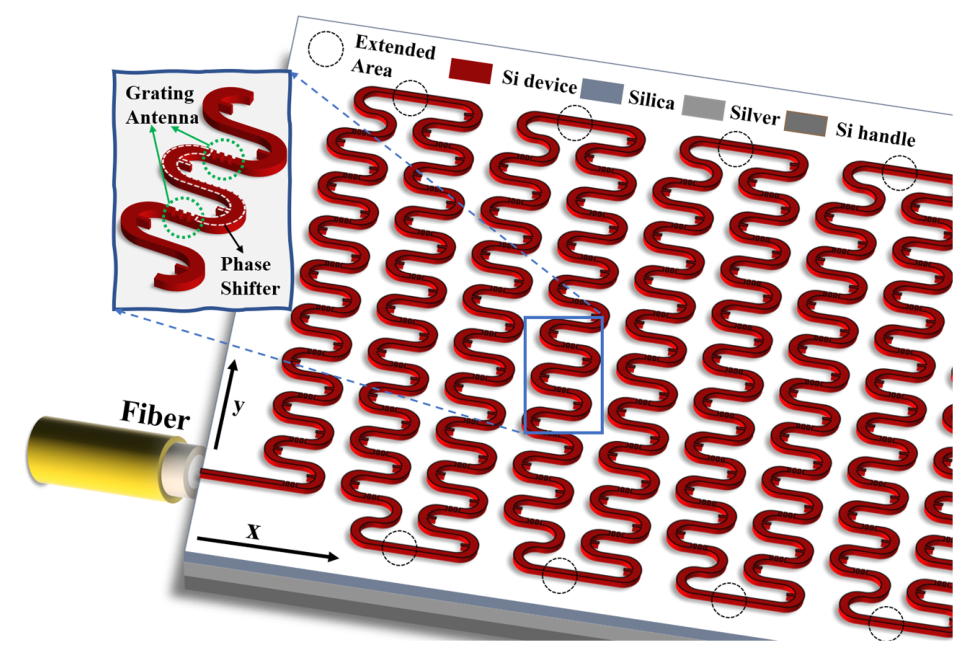
Chip-scale silicon photonics optical phased array (OPA) is widely used in free-space communication. However, due to the limitation of optical device design and manufacture, the distance between antennas in two-dimensional (2D) OPA is usually much larger than the optical wavelength. Practical applications require reducing antenna distance to eliminate higher-order interference and minimize sidelobe.
In a typical 2D OPA design, each antenna unit consists of an antenna, a phase shifter and a directional coupler. In the two-stage branching architecture of directional couplers, the serial configuration usually limits the antenna distance and causes losses. This branching architecture cannot simultaneously maximize optical power efficiency and reduce the distance between antennas.
In order to eliminate the use of long directional couplers and the above-mentioned trade-off, researchers led by Prof. ZHANG Wenfu from the Xi'an Institute of Optics and Precision Mechanics (XIOPM) of the Chinese Academy of Sciences (CAS) presented a serpentine OPA design. Results were published in Applied Optics.
In their design, the researchers used a straight grating antenna, which allowed a small amount of light to scatter out of the plane at the designed angle, while the rest could also pass through. The grating was made of silicon waveguides coated with silicon dioxide.
Besides, a silver layer was added at the bottom of the grating to improve the upward diffraction efficiency. The phase shifter was designed as an S-shaped bender that was placed between two adjacent grating antennas connecting to the waveguide and has an analog transmittance of 99.9%.
Raster antennas and phase shifters were arranged tightly in a multi-layer snake to reduce the overall size. They used different bending radii for the nine phase shifters in the serpentine section, deliberately introducing non-periodicity to reduce higher-order interference.
The simulation results show that the 9×9 antenna array achieves 98.4% light work efficiency over 66 μm length in both x and y directions. This results in a 30% reduction in linear size compared to a 9×9 branch design with the same power efficiency. The serpentine design can be optimized by adjusting the grating tooth height and other antenna numbers or optical power efficiency.
They inspected the effects of antenna output nonuniformity, and the results show that high-performance antenna arrays have considerable design space. They also studied the problem of antenna distance shortening in serpentine design. The results show that a 2D OPA design with a moderate number of antennas has significant benefits for antenna range reduction.
This design can significantly reduce the distance between antennas while maintaining high optical power efficiency. It is instructive to the design and application of 2D OPA.

3D schematic drawing of the presented serpentine OPA design. Grating antennas, phase shifters, and the additional lengths between two serpentine sections are circled in green, white, and black, respectively. (Image by XIOPM)

86-10-68597521 (day)
86-10-68597289 (night)

52 Sanlihe Rd., Xicheng District,
Beijing, China (100864)

